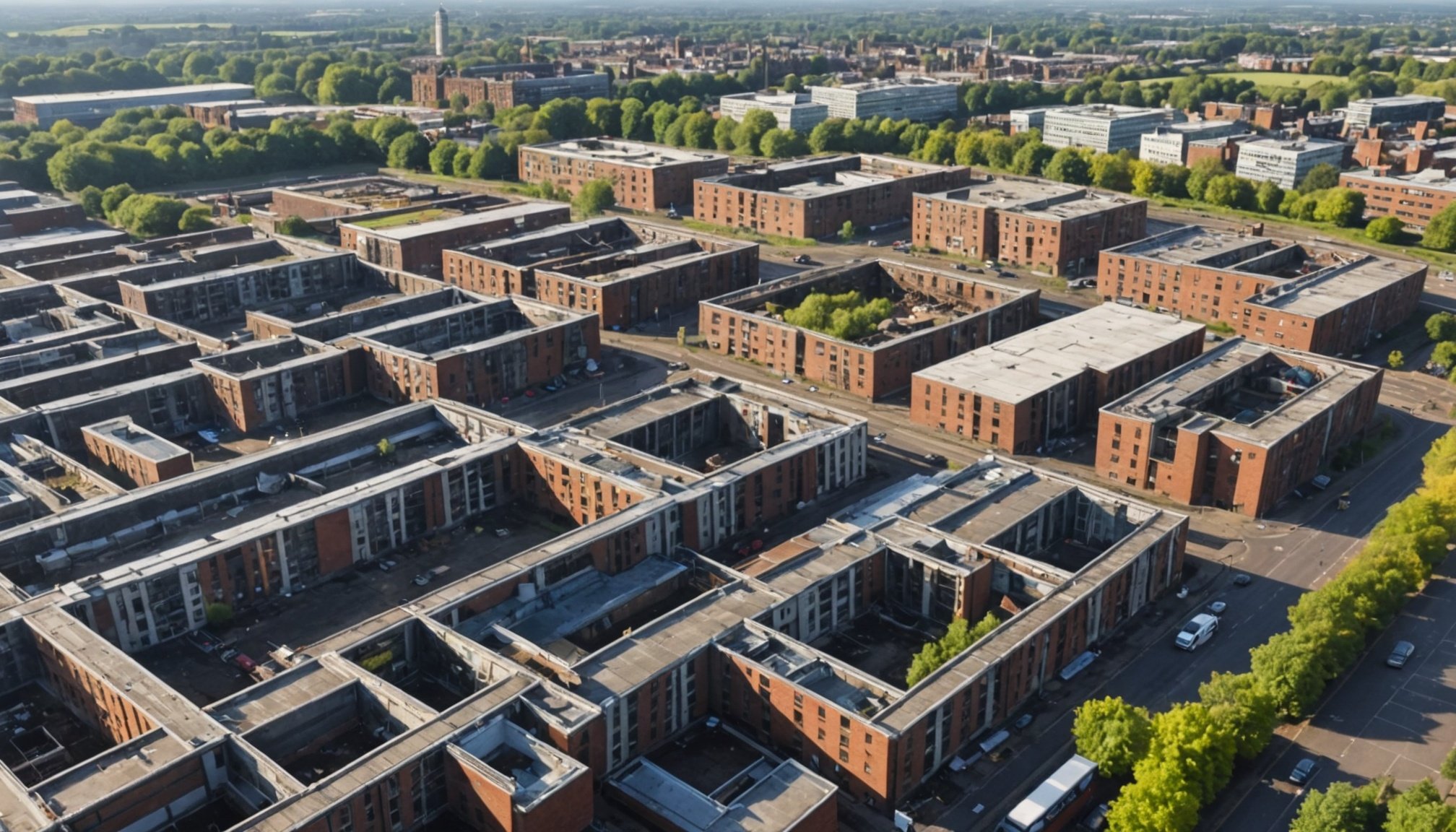Unlocking Brownfield Potential: A Blueprint for UK Property Developers to Tackle Redevelopment Challenges
The Importance of Brownfield Sites in UK Housing
Brownfield sites, or previously developed land, hold a significant key to addressing the UK’s housing crisis. For years, these sites have been overlooked, but with the increasing pressure to meet housing targets, they are now at the forefront of development strategies. The UK government has been clear in its stance: “The first port of call for development should be brownfield land,” as stated in the policy paper on Brownfield Passports under the Levelling-up and Regeneration Act 2023[1].
Understanding Brownfield Passports
Brownfield Passports are a new initiative aimed at simplifying the development process for these sites. Here’s how they work:
Also read : Essential Insurance Considerations for UK Properties Operating as Airbnb Rentals
Clarity and Certainty
Brownfield Passports are designed to provide clarity and reduce risk in the development process. Securing planning permission for housing on previously developed land can be complex, lengthy, and costly. By setting clear expectations for what can be developed on these sites, developers can plan their projects with more confidence, avoiding the need for multiple planning applications and appeals[1].
Local Development Orders (LDOs)
The government proposes using Local Development Orders (LDOs) to create area-wide planning permission for brownfield sites. This approach could bring greater consistency and speed to the development process, particularly for larger-scale projects. However, it also raises concerns about the potential dilution of local authority powers and the creation of tensions between central government and local councils[1].
Topic to read : Key Factors for UK Homeowners: Transforming Basements into Stylish, Livable Spaces
Challenges in Implementing Brownfield Passports
While the idea of Brownfield Passports seems promising, several challenges need to be addressed:
Funding and Resources
One of the critical issues is funding. Without sufficient funding, Brownfield Passports may end up as a cosmetic change to an underperforming system. Local authorities are often under-resourced, struggling to manage the volume of planning applications. Ensuring that local planning authorities have the necessary resources, expertise, and staff is crucial for boosting confidence in the planning system and encouraging investment in brownfield sites[1].
Community Opposition and Local Authority Powers
The introduction of LDOs could bypass local planning committees, leading to community opposition and feelings of being ignored. This can undermine community trust in the planning system. Moreover, the delay in creating and implementing LDOs can take months or even years, which can stall development progress[1].
Density and Height Issues
Density and height have long been contentious issues, often leading to significant pushback from local communities. Setting clear expectations for density through Brownfield Passports aims to mitigate this, but it remains a sensitive topic that requires careful handling to balance community needs with development goals[1].
Success Stories in Brownfield Regeneration
Despite the challenges, there are several success stories that highlight the potential of brownfield regeneration:
Wavensmere Homes
Wavensmere Homes is a prime example of a developer successfully transforming brownfield sites into thriving communities. With over 70% of their developments on brownfield land, they have delivered 1,000 homes on such sites in the past 24 months. Projects like the £160m redevelopment of Cable Wharf in Northfleet and the £150m redevelopment of Wolverhampton Canalside South demonstrate their commitment to urban regeneration and the creation of affordable housing[5].
Keepmoat Homes
Keepmoat Homes, the UK’s largest partnership developer, specializes in unlocking complex and challenging sites. Their collaboration with Homes England and other stakeholders has led to the successful regeneration of sites like the riverside development at Cable Wharf, which includes 598 new homes and prominent local buildings retained and refurbished[3].
Practical Insights and Actionable Advice
For developers looking to unlock the potential of brownfield sites, here are some practical insights and actionable advice:
Collaborative Approach
Working collaboratively with landowners, local authorities, and local people is crucial. This approach helps in resolving complicated planning challenges and ensures that the development meets community needs. For instance, Wavensmere Homes’ partnership with Homes England and other stakeholders has been instrumental in their success[3][5].
Addressing Funding Gaps
Developers need to secure sufficient funding to support their projects. This includes not only the initial development costs but also the long-term maintenance and community amenities. Government incentives and support can play a significant role in making brownfield developments viable[1][2].
Navigating Planning Policy
Understanding and navigating the planning policy landscape is essential. Developers should be aware of the latest updates to the National Planning Policy Framework (NPPF) and how these changes impact brownfield developments. For example, the recent updates to the NPPF support some release of Green Belt land, but the ‘golden rules’ associated with Green Belt development can affect viability[4].
Table: Comparing Brownfield and Greenfield Developments
| Aspect | Brownfield Developments | Greenfield Developments |
|---|---|---|
| Land Use | Previously developed urban land | Undeveloped or agricultural land |
| Community Impact | Brings vitality to high streets, reduces urban sprawl | Often located on the edge of settlements, may require new infrastructure |
| Planning Challenges | Complex planning process, potential community opposition | Sequential testing, nutrient neutrality ‘moratoriums’, local plan constraints |
| Environmental Benefits | Reduces the need for greenfield development, preserves natural habitats | Can lead to loss of natural habitats, increased carbon footprint |
| Funding | Often requires significant upfront costs for site remediation | Generally lower upfront costs but may require more infrastructure investment |
| Government Support | Incentives for using brownfield sites, Brownfield Passports | Incentives for sustainable development, but less specific support |
Overcoming Labour and Supply Chain Challenges
As the UK construction sector prepares for growth in 2025, labour and supply chain challenges remain significant obstacles. Here are some strategies to overcome these:
Labour Challenges
- Training and Development: Investing in training programs to address the skills gap in the construction industry.
- Innovation: Adopting new technologies and construction methods to improve efficiency and reduce labour requirements[2].
Supply Chain Issues
- Diversification: Diversifying supply chains to reduce dependence on single suppliers.
- Local Sourcing: Encouraging local sourcing of materials to reduce logistics challenges and support local economies[2].: A Long-Term Commitment to Brownfield Regeneration
Brownfield regeneration is not a quick fix but a long-term commitment to sustainable development. It requires careful planning, collaboration, and significant investment. As James Dickens, Managing Director of Wavensmere Homes, noted, “Having delivered 1,000 homes on brownfield land during the past 24 months, we are well positioned to progress with our current growth trajectory and the implementation of our five-year business plan”[5].
Key Takeaways for Developers
- Prioritize Brownfield Sites: Focus on brownfield land to meet housing targets and support sustainable development.
- Collaborate with Stakeholders: Work closely with local authorities, landowners, and the community to ensure successful regeneration.
- Secure Funding: Ensure sufficient funding for site remediation, development, and long-term maintenance.
- Navigate Planning Policy: Stay updated on planning policy changes and their implications for brownfield developments.
- Address Labour and Supply Chain Challenges: Invest in training, adopt innovative technologies, and diversify supply chains.
By following these guidelines and learning from success stories, developers can unlock the full potential of brownfield sites, contributing significantly to the UK’s housing supply and urban regeneration efforts.











